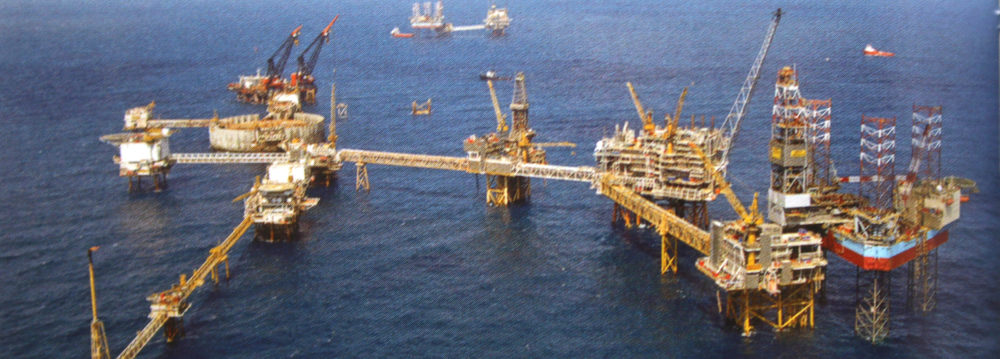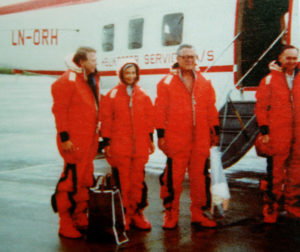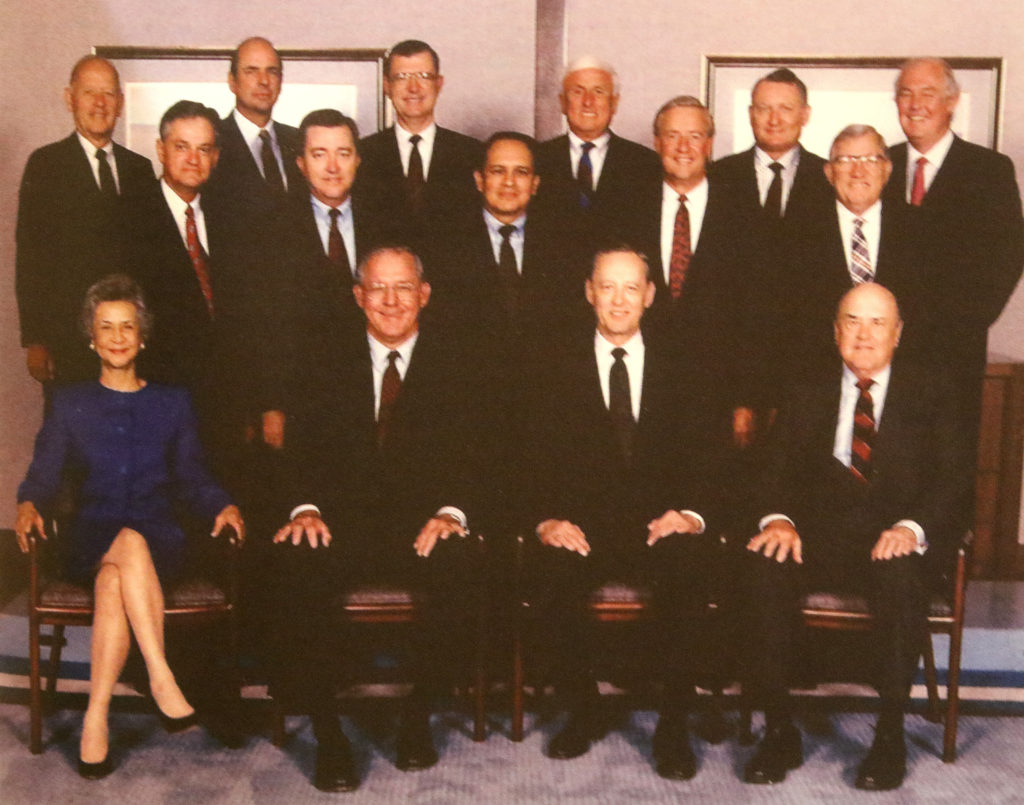ON NORTH SEA RIG
Ekofisk Trip Builds Camaraderie
Among Phillips Petroleum Directors

Editor’s Note: Dolores Wharton of Cooperstown and NYC, the SUNY system’s former First Lady, was the first black woman, as well as the first black, on a number of Fortune 500 boards. In her new memoir, “A Multicultural Life,” she describes Phillips Petroleum directors’ 1990 camaraderie-building trip to a North Sea oil rig, which helped “the old guard (adjust) to us interlopers.”
By DOLORES WHARTON • from “A Multicultural Life”

The intense exchanges during our meetings soon relaxed as the old guard adjusted to us interlopers. A sense of camaraderie evolved during a field trip undertaken by the entire board and company officers to ekofisk, the gigantic oil drilling platform twenty miles off the coast of Norway. That trip – the full board’s first-ever excursion to the platform – was at my request and to fulfill my desire to experience an actual drilling platform located in the North Sea.
Discovered in 1969, Ekofisk oil field, was so huge that at its peak, its oil and gas output amounted to more than a third of Phillips’ total energy production. Our party, arriving from different parts of the United States, gathered in London. From there, one of the company’s ocean-crossing planes took us to Stavanger, Norway, where a twenty-passenger helicopter that droned for two hours, brought us over the vast North Sea.
We had left the coast of Norway two hundred miles behind, with no land in sight and only a thin, flat line where gray sky met gray-green water. Below us, the sea churned and wind gust whipped up waves flecked with foam. In the distance, the Ekofisk flame flared as a lonely torch against the darkening clouds. The fire was burn-off of excess gas that for me served as light signaling the presence of human life (not to mention the landing dock) ahead. Upon approach, the helicopter circled to give us a close-up view of the seven-billion-dollar facility. The Ekofisk complex comprises some twenty-five drilling and production platforms. The complex structure spun out for what seemed like miles on the sea’s serpentine surface, its open-air catwalks forming a vast steel latticework like a web of giant Tinkertoys. Pipes ran in a maze like tangle from the platforms to the concrete storage tank. Multiple glass-enclosed engineering rooms with color-coded flashing lights of Star Wars intensity announced ongoing operations. Vertiginous stilts served as both support and anchor, their bases sunk seventy meters into the muddy sea floor. I was mesmerized by the enormity of the platform operation

At any given time, about fifteen-hundred riggers and crew called Ekofisk home. In hotel-like quarters were numerous boxlike dining areas serving the men round the clock. “Pretty good food,” said one of the men I was talking with. “Better be!” said another. The workers were all men whose time on the platform consisted of three shifts of fourteen days each before returning to shore. The required working day included twelve hours actually on the job. I was concerned about the amount of time the men had to endure the sometimes brutal oceanic environment.
But then these specialists, recruited from all around the world and carefully trained, had one essential trait in common-the toughness to withstand those oft-times brutal conditions. A calm sea during our visit allowed a few off-duty workers to sit on the edge of the platform, as relaxed as tourists fishing in the Florida Keys. The principal reason for the trip was to see repairs to the platform’s weakening sea floor. Toward the end of 1984, Phillips had discovered that the seabed beneath Ekofisk was settling, apparently due to the tremendous extraction of oil and gas. Consequently, the platforms had dropped closer to sea level than when first built. To restore the margin of safety between the decks and the water, Phillips had devised a method for raising the platform by using giant floating and semi-submersible hydraulic jacks. By 1989, the enormous job had been completed, and we directors went out to inspect what three million man-hours and four-hundred-fifty-five-million dollars had produced. I was deeply impressed and couldn’t help but wonder how any normal human being had the courage and desire to pursue such dangerous work.

